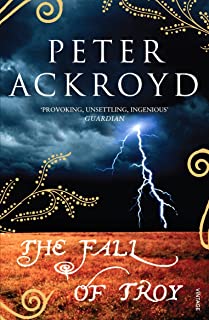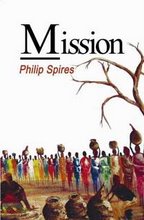Tuesday, February 10, 2009
When We Were Orphans by Kazuo Ishiguro
Friday, January 9, 2009
The Yellow Rain by Julio Llamazares
Tuesday, January 6, 2009
Asylum by Patrick McGrath
Ways Of Escape by Graham Greene
Lord Of The Flies by William Golding
Brick Lane by Monica Ali
The Fall Of Troy by Peter Ackroyd
Sunday, December 7, 2008
Day Seven of Forever Friends
Thank you for reading this blog entry! This is the seventh post on the Forever Friends blog tour and we have made it through the first week! Thanks again to everyone following the tour for your support! I hope the next seven days are as enjoyable and eventful as the last seven days. On Tuesday, the book finally became available at the amazing price of $9.99. This was a mistake made by amazon.com that allowed many members of the Published Authors Network and forum to take advantage of their mistake. You will find a link to amazon.com at the bottom of this post. The same day the book became available from all the online bookstores, I received the first review of Forever Friends by Apex Reviews.
In the review, the reviewer, Linda Waterson referred to the different sections in the book:
Compiled in various sections, ranging from “Family Friends” to “Lost Friends” to “False Friends” to “Spiritual Friends,” the literary offerings contained therein just as equally travel the full spectrum of friendship, covering all imaginable ground in-between. There is reminiscing over childhood heroes, protectors of the four-legged ilk, and gracious musings over friends who were – quite literally – lifesavers. There are also poems that wish for the spreading of global goodwill, as well as verses rendered in homage to friends that are gone, but not forgotten.
She also made reference to the use of quotes at the beginning of each section:
For added contextual flavor, preceding each section is an insightful blurb helping to foster within the reader a greater understanding of what that particular facet of friendship is really all about. Consider, for example, this literary jewel that precedes the “False Friends” section:
False friends are like our shadow, keeping close to us while we
walk in the sunshine, but leaving us the instant we cross into the shade.
Christian Nestell Bovee
Philip Spires short story, Stranger than Friends, is the first book in this section. The well-crafted characterizations and authentic dialogue make for an entertaining read. The boredom of the staff and the insensitivity of the clientele in the bar of the Old Hotel in an off the track village, are all too obvious to an unmarried couple staying at the hotel overnight. In the morning, things have come to a head and one family will not be the same as it was the night before as people who were once friends become strangers to each other. I would like to congratulate Philip on a story that draws in the reader right from the beginning as two strangers descend the steep path to a small tightly-knit place, where outsiders are welcome – but only for a short stay.
I would also like to thank Philip for inviting me to make this post on his blog and for giving me the opportunity to add a bit more information about the anthology.
It isn’t too late to order a copy and, as I keep saying, you will not be disappointed!
Forever Friends is available now from all major online stores, including amazon.com:
and barnesandnoble.com:
Thanks again for reading this and best wishes for the holiday season!
Shelagh Watkins
Please follow the tour to learn more about the book.
Blog Tour
December 1 Chelle Cordero
December 2 Zada Connaway
December 3 Mary Muhammad
December 4 Helen Wisocki
December 5 Pam Robertson
December 6 Dick Stodghill
December 7 Philip Spires
December 8 Milena Gomez
December 9 L. Sue Durkin
December 10 A. Ahad
December 11 Malcolm R. Campbell
December 12 Lynn C. Johnston
December 13 Dianne Sagan
December 14 Donald James Parker
December 15 Karina Kantas
December 16 Grace Bridges
December 17 Tiziana Rinaldi Castro
December 18 Yvonne Oots
December 19 Dana Rettig
Thursday, December 4, 2008
Over By Christmas by William Daysh
Saturday, November 22, 2008
Pain Wears No Mask by Nik Morton
Notes On A Scandal by Zoë Heller
A Sunday At The Pool In Kigali by Gil Courtemanche
Friday, October 24, 2008
The Destiny Of Natalie X by William Boyd
Monday, October 20, 2008
The Heart Of The Matter by Graham Greene
Over forty years ago a new English teacher at my school answered a question asked by an eager student. The question was, “What do you think is the greatest novel written in English?” He didn’t think for very long before replying, “The Heart Of The Matter.”
We academically-inclined youths borrowed Graham Greene’s novel from the library and eventually conferred. There were shrugs, some indifference, appreciation without enthusiasm. We were all about sixteen years old.
I last re-read The Heart Of The Matter about twenty-five years ago. When I began it again for the fourth time last week, I could still remember vividly the basics of its characters and plot. Henry Scobie is an Assistant Chief of Police in a British West African colony. It is wartime and he has been passed over for promotion. He is fifty-ish, wordly-wise, apparently pragmatic, a sheen that hides a deeply analytical conscience. Louise, his wife is somewhat unfocusedly unhappy with her lot. She is a devout Catholic and this provides her support, but the climate is getting to everyone. She leaves for a break that Scobie cannot really afford. He accepts debt.
The colony’s businesses are run by Syrians. Divisions within their community have roots deeper than commercial competition. There is “trade” of many sorts. There are accusations, investigations, rumours and counter-claims. Special people arrive to look into things. There’s a suicide, more than one, in fact, at least one murder, an extra-marital affair, blackmail, family and wartime tragedy.
But above all there is the character of Henry Scobie. He is a man of principle who thinks he is a recalcitrant slob. He is a man of conscience who presents a pragmatic face. He makes decisions fully aware of their consequences, but remains apparently unable to influence the circumstance that repeatedly seems to dictate events. He remains utterly honest in his deceit, consistent in his unpredictability. His life becomes a beautiful, uncontrolled mess. His wife’s simple orthodox Catholicism contrasts with his never really adopted faith. He tries to keep face, but cannot reconcile the facts of his life with the demands of his conscience. His ideals seem to have no place in a world where interests overrule principle. He sees a solution, a way out, but perhaps it is a dead end.
For twenty-first century sensibilities, the colonial era attitudes towards local people appear patronising at best. Perhaps that is how things were. But The Heart Of The Matter is not really a descriptive work. It is not about place and time. Like a Shakespearean tragedy, the events and their setting provide only a backdrop and context for a deeply moving examination of motive and conscience. And also like a Shakespearean tragedy, the novel transcends any limitations of its setting to say something unquestionably universal about the human condition. Forty years on, I now realise, that my new English teacher was probably right.
Saturday, October 18, 2008
A valley side too far - Resistance by Owen Sheers
The demands of farming, however, continue, despite invasions and estrangement. Sarah, though devastated by her husband’s, Tom’s, disappearance, must battle on. There are dogs to see to, lambs to nurture, pigs to feed and foals to train. This permanence of landscape and activity is thus set against massive upheaval. Not only have the men gone, but German troops have appeared, troops who seem to be more on holiday than at war. Again, incredible.
Alex is good with animals and helps at Sarah’s farm, as does Albrecht, an English-speaking, Oxford-educated academic, uncomfortable in military garb. Relationships develop, whilst most involved apparently remain increasingly apologetic.
Owen Sheers also wants us to believe a scenario for conquest where the invaders lay siege to the cities. Again this lacks credibility, since German military success in the Second World War seemed to come when invasions went straight to the centre. Where they lay siege, such as Leningrad or Stalingrad, they failed. But then the whole point is that the history has been reversed.
In a situation where passions and tempers would probably have been frayed, tested at least, Owen Sheers presents a community that seems to survive just as before, minus the local males. Resistance is well written and is very readable, often beautiful. But it does demand that one’s belief be suspended from very high indeed.
View this book on amazon ResistanceMonday, October 6, 2008
Lives In Time - The Amateur Marriage by Anne Tyler
Sunday, October 5, 2008
Prisoners of ideology - Angels and Insects by A. S. Byatt
Saturday, October 4, 2008
Regeneration by Pat Barker
Saturday, September 6, 2008
The Heart Of The Country by Fay Weldon
Before The Knife by Carolyn Slaughter
The South by Colm Toibin
Monday, September 1, 2008
2030 The Lottery by Peter Moore
Please Sir, There’s A Snake In The Art Room by Keith Geddes
Wednesday, August 20, 2008
Never Let Me Go by Kazuo Ishiguro
The book begins in Hailsham, an obviously special school set in an idyllic corner of the English countryside. But this is clearly no ordinary education. We follow the fortunes of three of its students, Kathy, Ruth and Tommy. We see them grow up, make their fumbling transformation from childhood to adolescence and then embark upon the stuttering unpredictability of young adulthood. Hailsham’s students have to learn how to deal with their own shortcomings and how to manage their talents. They must cope with sometimes strained relations with their teachers, especially in the area of reconciling what they want to do versus what seems to be demanded of them, and thus what they are allowed to attempt. They become aware of sex and introduce themselves to its world in their own ways at different times, each of them reacting differently to their experience.
So what makes these people so special? Well, for a start they live protected lives. They never appear to need any money, nor possessions, for that matter, what little they do have being recycled ad infinitum via a system of almost formal barter. They seem to be protected from fashion, consumerism, family break-up, mass media and even street life. Surely there is something strange about them, despite their apparently normal physical, mental and psychological characteristics.
Not until about half way through the book does the reader start to fill in the blanks. But by the end the dreadful picture is complete, and rendered even more frightening by its complete credibility. To find out the nature of the plot, you will have to read the book, but, though I have stressed the importance of the overall concept’s contribution to the book’s success, it is not the subject matter that makes this a superb novel. It is the characterisation, the empathy that the reader develops with Kathy and Tommy and the sympathy that their tragedy eventually engenders. The context served to amplify these responses, not blur or confuse them. It is this quality that makes never Let Me Go a completely memorable and highly moving read.
View this book on amazon
Never Let Me Go



























